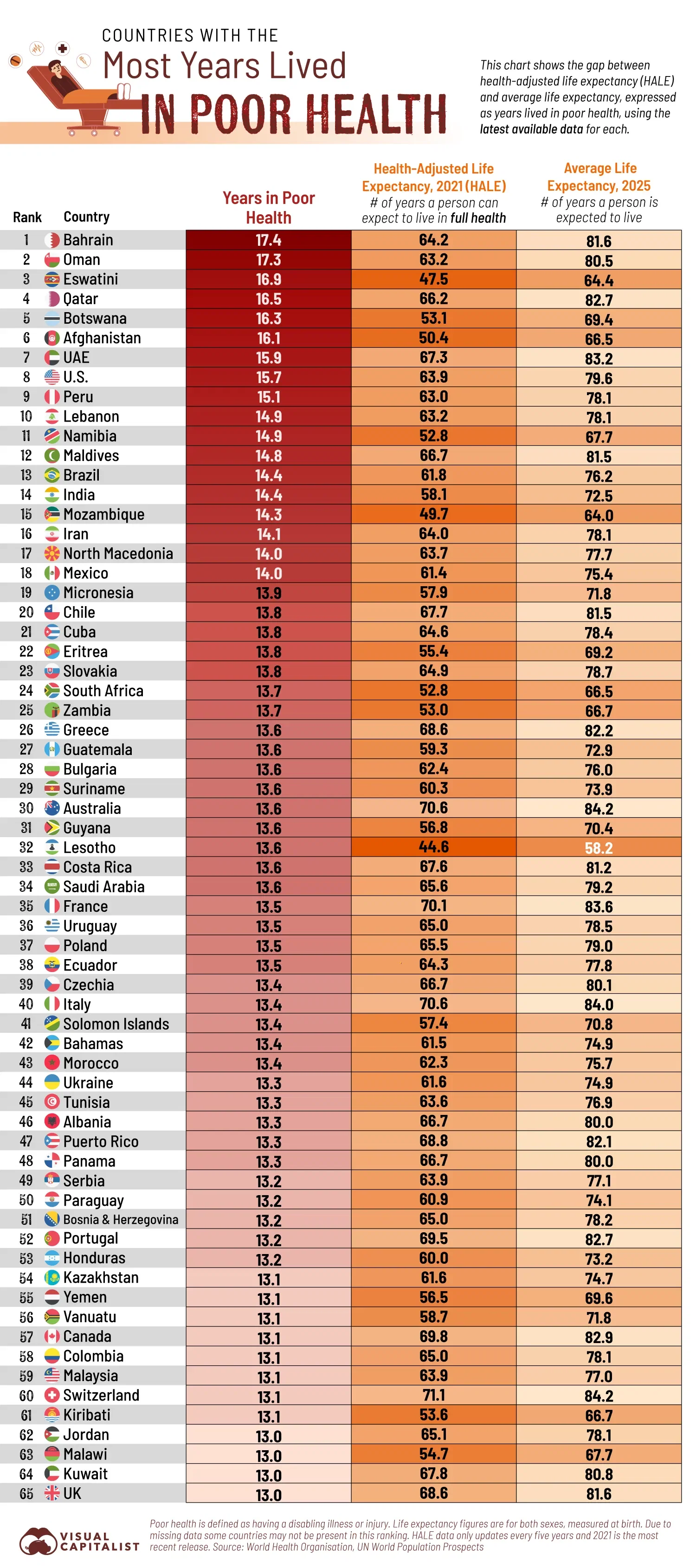Key Takeaways
- When measuring the gap between average life expectancy and health-adjusted life expectancy (HALE), wealthy Gulf states dominate the worst performers: people in Bahrain, Oman, Qatar, and UAE all have 16–17 years of poor health.
- Another rich country, the U.S., ranks 8th by its gap between life expectancy and HALE.
- For reference, these same countries rank high in obesity rates.
- Also worth noting is their average life expectancy at birth is fairly high, which means these countries are good at keeping people alive with advanced medical technology.
- But they may be failing at keeping them healthy, as if they’ve optimized for extending life rather than living well.
- Note: HALE data updates once every five years. This chart uses the most recent estimates from 2021.
What is HALE (Health-Adjusted Life Expectancy) — And Why Does it Matter?
HALE measures how many years a person can expect to live in good health, defined as free from disabling illness or injury.
HALE matters because it fundamentally reframes what we mean by a "successful" life and healthcare system.
Traditional life expectancy tells us how long people live, but HALE tells us how long they live well.
These "unhealthy years" are extraordinarily expensive. The US healthcare system's poor HALE performance means they’re essentially running a massive, costly life-support operation for millions of people.
Countries with better HALE ratios spend less on healthcare while achieving better outcomes because they're preventing problems rather than managing chronic decline.
